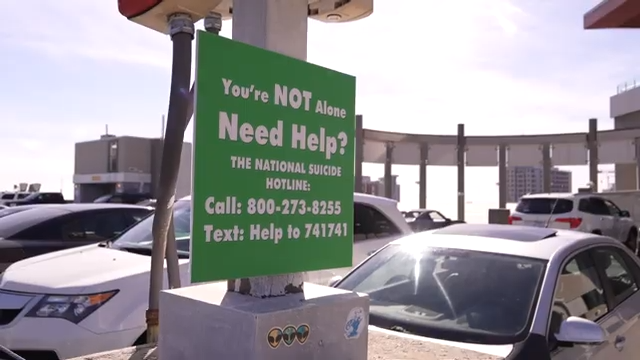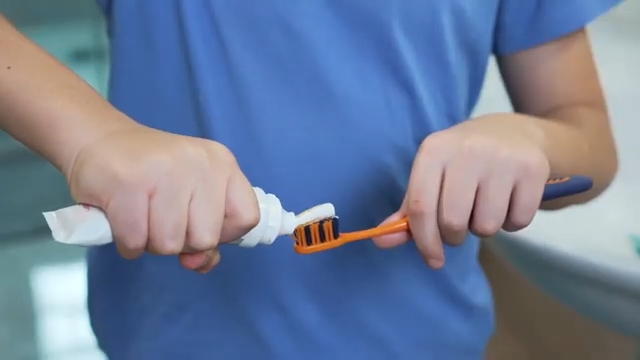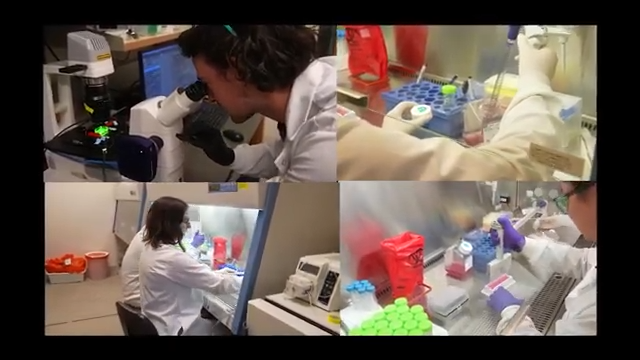ORLANDO, Fla. (Ivanhoe Newswire) – The U.S. government is handing out 400 million N95 masks for free with social distancing. It is in response to the CDC’s recommendation to use higher quality masks to reduce the spread of the COVID variant, Omicron. But how well do these masks really work? A group of researchers has put various masks to the test.
Cloth, surgical, and KN95 masks are the various kinds of masks available to provide protection against COVID-19. But their effectiveness has been heavily debated over the course of the pandemic. So, do masks really work?
Mechanical and Aerospace Engineering professor at the University of Central Florida, Kareem Ahmed was involved with the mask research.
“What we found is that the aerosols and droplets are propagating at a shorter distance, around four feet and change,” Professor Ahmed said.
Researchers at the University of Central Florida had participants recite a phrase and simulate a cough for five minutes without a face-covering, with a cloth face covering, with a three-layered disposable surgical mask, and with a KN95 mask. They then, measured how far the particles travelled. Without a mask, particle spread was four feet; with a cloth mask, it was two feet.
“We did not expect the cloth mask to underperform the way it underperformed, by getting about two feet of distance,” Professor Ahmed explained.
However, other masks did perform better.
“A disposable three-layer surgical blue like mask, can reduce social distancing to about half a foot,” Professor Ahmed added.
Particles and aerosols were undetectable in 95 variant masks. The researchers believe this study can help people determine their comfort levels.
Professor Ahmed said, “If you’re wearing a N95, you could feel safer. If the person in front of you is wearing a cloth mask, then you would want to keep your distance.”
Last year, the same team of University of Central Florida researchers identified the characteristics that make people “super spreaders.” They determined that young men are likelier to spread COVID because of thin saliva that lingers in the air. Also, if you have a full set of teeth, that can cause your sneeze to travel much farther.
Contributors to this news report include: Milvionne Chery, Producer; Roque Correa, Videographer, Editor.
To receive a free weekly e-mail on medical breakthroughs from Ivanhoe, sign up at: http://www.ivanhoe.com/ftk
Source:
https://www.nytimes.com/2022/01/19/health/biden-free-n95-masks.html
MEDICAL BREAKTHROUGHS
RESEARCH SUMMARY
TOPIC: MASKS & SOCIAL DISTANCING: IS TWO THE NEW SIX?
REPORT: MB #5025
BACKGROUND: COVID-19 is an infectious disease caused by the SARS-CoV-2 virus. According to the World Health Organization, as of February 21, 2022, there have been 423, 423,438,000 worldwide confirmed cases of COVID-19, including 5.8 million deaths. The CDC defines social distancing as it applies to COVID-19 as “remaining out of congregate settings, avoiding mass gatherings, and maintaining distance (approximately 6 feet or 2 meters) from others when possible.” To protect yourself and others from COVID-19, the CDC continues to recommend that you wear the most protective mask you can that fits well and that you will wear consistently. Some masks and respirators offer higher levels of protection than others, and some may be harder to tolerate or wear consistently than others. It is most important to wear a well-fitting mask or respirator correctly that is comfortable for you and that provides good protection.
(Source: https://www.who.int/health-topics/coronavirus#tab=tab_1
https://www.cdc.gov/coronavirus/2019-ncov/prevent-getting-sick/types-of-masks.html)
DIAGNOSING: People with COVID-19 have had a wide range of symptoms reported – ranging from mild symptoms to severe illness. Some symptoms include fever or chills, cough, shortness of breath or difficulty breathing, fatigue, muscle or body aches, headache, new loss of taste or smell, nausea or vomiting, or diarrhea. To test for the COVID-19 virus, a health care provider takes a sample from the nose (nasopharyngeal swab), throat (throat swab) or saliva. The samples are then sent to a lab for testing. The FDA has authorized at-home tests for the COVID-19 virus.
https://www.mayoclinic.org/diseases-conditions/coronavirus/diagnosis-treatment/drc-20479976)
NEW TECHNOLOGY: In one study across 200 countries, mandatory mask wearing resulted in nearly 46% fewer negative outcomes from COVID-19. In another study in the U.S., coronavirus transmission was reduced 29% in states where masks were mandatory. Among five studies that looked at physical distancing, the researchers found a 25% reduction in the rate of COVID-19. A study in the U.S. showed a 12% decrease in coronavirus transmission, while another study in Iran reported a reduction in COVID-19 mortality. All of this data shows that it is important to wear an effective mask and continue to practice social distancing to “flatten the curve.”
(Source: https://www.webmd.com/lung/news/20211118/mask-wearing-cuts-new-covid-cases-study)
FOR MORE INFORMATION ON THIS REPORT, PLEASE CONTACT:
Robert Wells
If this story or any other Ivanhoe story has impacted your life or prompted you or someone you know to seek or change treatments, please let us know by contacting Marjorie Bekaert Thomas at mthomas@ivanhoe.com




